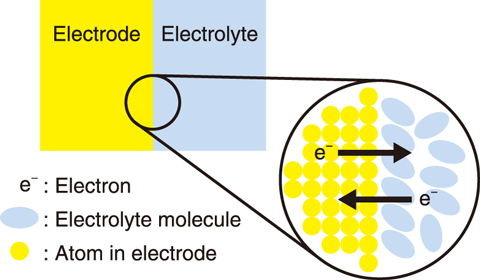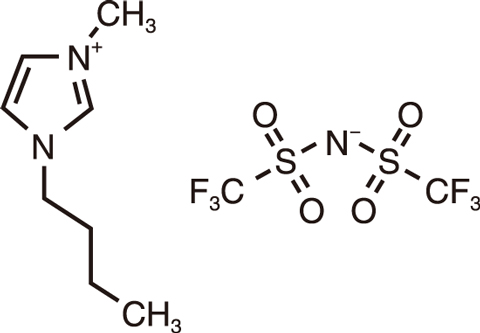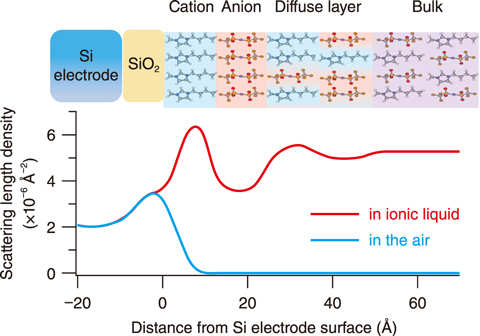
Fig.5-13 The electrolyte–electrode interface inside a battery

Fig.5-14 Ionic liquid: 1-butyl-3-methylimidazolium bis(trifluoromethylsulfonyl)amide

Fig.5-15 Detailed structure of the interface explored using neutron reflectivity
The interface between a solid and a liquid, known as the solid–liquid interface, is a place where a variety of chemical reactions occur and is thus strongly connected to daily life. For example, batteries use electrochemical reactions, which occur at the electrode–electrolyte interface, as shown in Fig.5-13. Chemical reactions, which occur at interfaces, are thought to be affected by the atomic order of the solid surface and the order of the liquid molecule to be adsorbed on the solid surface. For a deeper understanding of chemical reactions, therefore, it is necessary to clarify the reaction rate as well as the nano-scale structure of the reaction interface.
Ionic liquids have gained attraction as a “brand-new” electrolyte to study electrochemical reactions in ionic liquids. A typical molecular structure of an ionic liquid is shown in Fig.5-14; an ionic liquid is a salt that is in a liquid state at room temperature. Unlike water or organic solvents, ionic liquids have high electric conductivity and are nonvolatile. However, the reactivity of electrochemical reactions in water is different than in ionic liquids. This is likely due to the order of ionic liquid molecules adsorbed on the electrode. However, the order of the molecules is not easily calculated. Therefore, the structure of the ionic liquid–electrode interface was experimentally analyzed using quantum beams (including X-ray and neutron) at SPring-8 and J-PARC.
As neutrons can interact with light elements such as hydrogen, carbon, and oxygen, structural analysis using neutrons is suitable for the analysis of the order of ionic liquid molecules. Further, selective structural analysis is possible by substituting hydrogen (H) with deuterium (D) at the site of interest on the molecules. A highly effective and precise deuteration technique was therefore developed and used to study the order of ionic liquid molecules adsorbed on the surface of a Si electrode on the nano-scale. The resulting neutron reflectivity as performed at the MLF at J-PARC SHARAKU is summarized in Fig.5-15. The analysis revealed that ionic liquid molecules create a layered structure near the negatively charged Si electrode surface and that cation molecules constitute the first layer. Future work will aim to further clarify the dependence of the electrode potential on the interfacial structure and the relationship between the interfacial structure and the molecular structure of ionic liquids.
This study was conducted on “Study of the electrical double layer structure formed in ionic liquids using quantum beam scattering techniques”, supported by the Japan Society for the Promotion of Science (JSPS) KAKENHI Grant-in-Aid for Scientific Research (C) (No.15K05402).
(Kazuhisa Tamura)